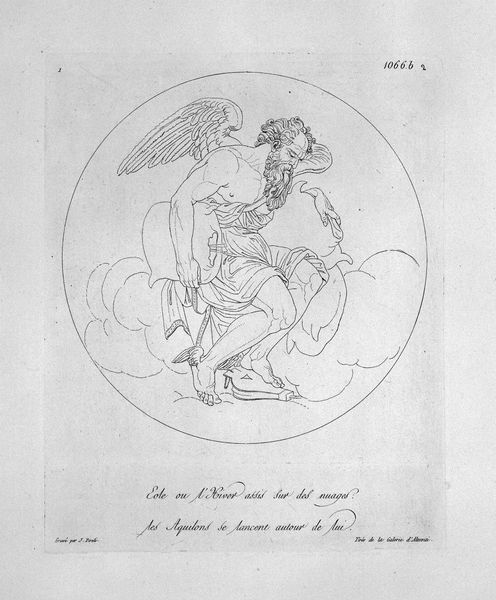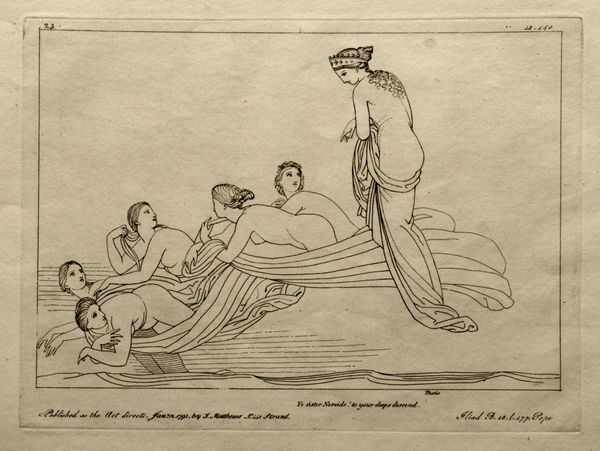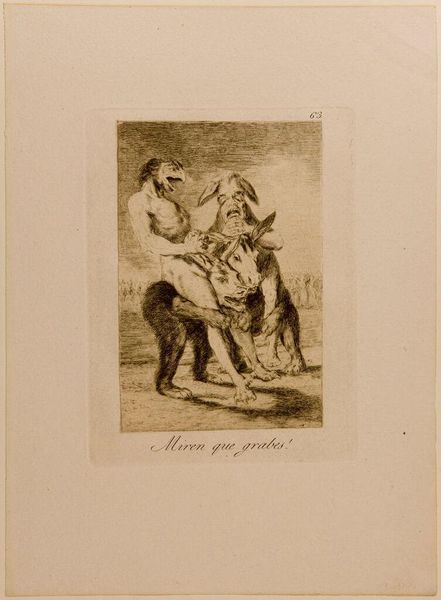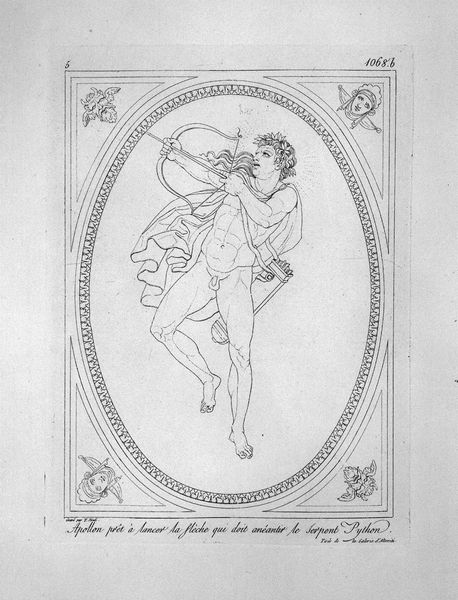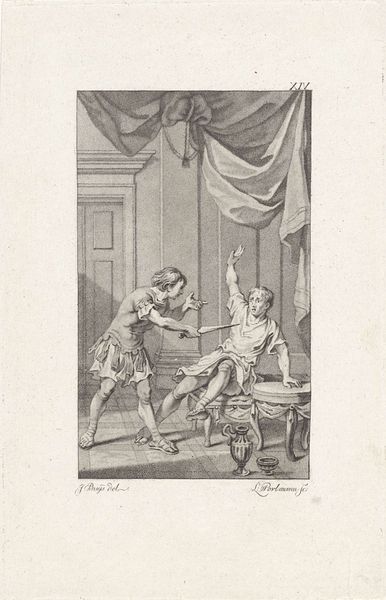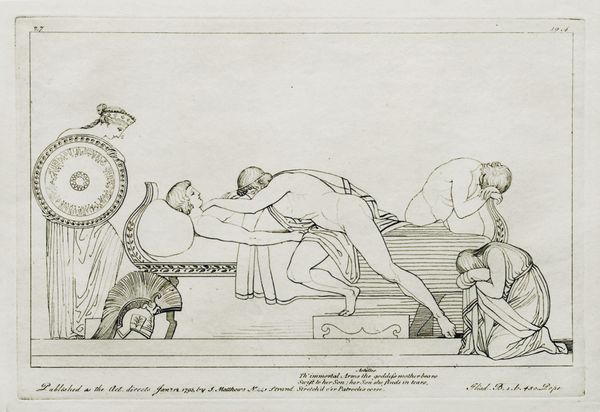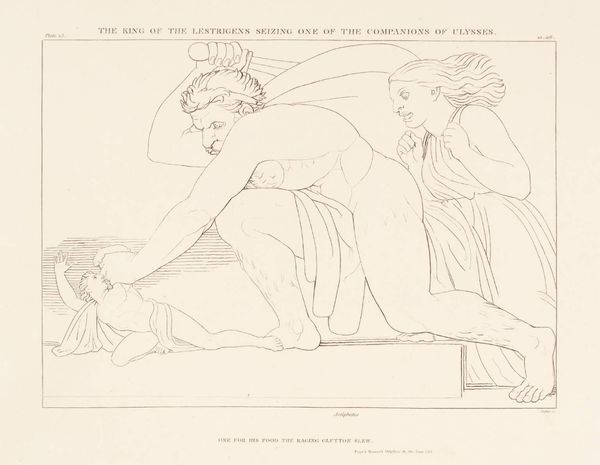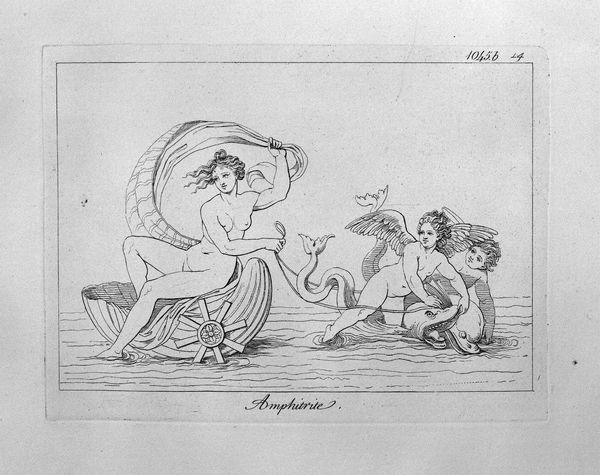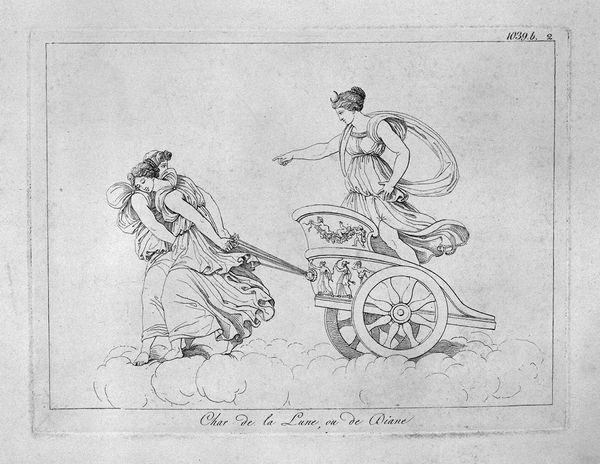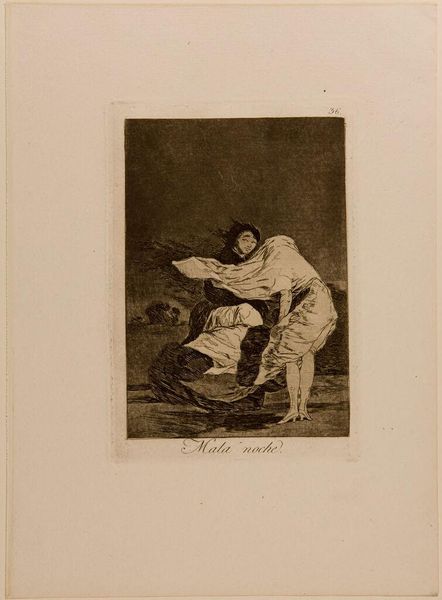
drawing, print, ink, engraving
#
drawing
#
neoclacissism
#
allegory
# print
#
greek-and-roman-art
#
landscape
#
figuration
#
ink
#
roman-mythology
#
history-painting
#
engraving
Copyright: Public domain
This line drawing of Bacchus, god of wine, by Giovanni Battista Piranesi, presents us with powerful symbols of antiquity that have echoed through centuries. The wreath of grape vines crowning Bacchus signifies both his divine connection to viticulture and the ecstatic experiences associated with wine. Notice the cup he raises, a gesture that embodies ritual and revelry. It's a motif we see echoed in countless bacchanals across Roman art and beyond, representing a conduit to altered states and spiritual communion. Consider the satyr accompanying Bacchus, a symbol of untamed nature and Dionysian frenzy. Such figures, half-human and half-animal, embody the primal instincts liberated by the god's intoxicating influence. Think back to the medieval bestiaries, where such hybrid creatures took on darker, more sinister connotations, reflecting society's ambivalent relationship with the irrational. The symbols of Bacchus are not static relics; they are living organisms, constantly evolving and adapting. The emotional charge they carry—a potent mixture of ecstasy, liberation, and primal fear—engages us on a subconscious level, reminding us of our own complex relationship with pleasure, excess, and the wilder aspects of the self.
Comments
No comments
Be the first to comment and join the conversation on the ultimate creative platform.
